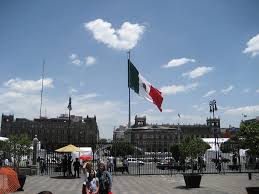By Brenna Sullivan
For this activity, my group researched the different economic, cultural, historical, and political causes of men’s migration. We each researched one cause and found statistics, consequences, expert opinions, and solutions for each one. We utilized apps like WhatsApp and Zoom in order to stay in touch and keep each other updated on what we were finding. We also used our group chat as a way to discuss how each cause relates to the others, as we were finding that many of the causes had overlapping ideas; for example; both cultural causes and economic causes included discussions of the idea of men being the main breadwinners for their families, both of which pushed them to migrate in order to earn more money for them.
The research on men’s migration done in conjunction with my team members in Mexico provided valuable insights into the multifaceted nature of this issue. We learned a lot about the causes of men migration and what can be done to hopefully lessen the problem. To begin, one of the primary drivers of men’s migration is the pursuit of better economic prospects. Many men migrate to access higher-paying jobs and improved standards of living, particularly in sectors like construction, agriculture, and services. The income disparity between their home countries and destinations like the United States incentivizes migration as a means of supporting themselves and their families financially. Cultural expectations often place men in the role of breadwinners, leading them to migrate in order to provide for their families. The remittances they send back home serve as crucial income sources for their communities, but the burden of caring for the family falls disproportionately on the women left behind, altering family dynamics and increasing their workload. Political instability, corruption, and violence in their home countries also contribute to men’s decision to migrate. Seeking safety and stability, they may flee regions plagued by conflict and organized crime, hoping to find better living conditions elsewhere. Social norms and cultural expectations shape men’s migration patterns, influencing their perception of masculinity and their role within their communities. Migration can lead to shifts in gender roles and responsibilities, affecting both the women and even the men left behind. Political factors, including immigration policies and bilateral agreements between countries, play a significant role in shaping migration patterns. Policies that address the root causes of migration, protect migrant rights, and promote social inclusion are essential for managing the complexities of men’s migration. The expert opinions we found, like that of Dirgha Ghimire, Yang Zhang, and Nathalie Williams, highlight the dual impacts of male migration on women, stressing the need for formal policies to ensure that remittance flows benefit families. Simone Cecchini underscores
the importance of human rights in addressing migration, advocating for equitable treatment and social protection to mitigate migrants’ vulnerabilities. Douglas S. Massey acknowledges the role of economic factors in migration but calls for comprehensive approaches considering various aspects. Alejandro Santos Cid underscores the complexity of migration processes, urging action on poverty, violence, and inequality. He stresses the necessity of robust immigration governance to navigate these challenges effectively. And the solutions we came up with start with establishing government programs to ensure proper remittance flows, promoting cooperation among women to share responsibilities, and implementing long-term economic growth programs to reduce the need for migration. We need reforms to guarantee migrants’ safety and rights, bilateral agreements to address migration issues, and policies ensuring labor protection and fair salaries. Communities must focus on local economic development, education, entrepreneurship promotion, and international cooperation. Cooperation between nations must be prioritized to address migration root causes, develop inclusive immigration policies, and combat societal stereotypes and prejudices. These solutions aim to address the complex challenges of men’s migration comprehensively. Our research highlights the interconnected nature of economic, social, political, and cultural factors influencing men’s migration. It shows the importance of comprehensive approaches to migration governance that address the root causes of migration, protect migrant rights, and foster inclusive societies both in sending and receiving countries. By understanding these dynamics, hopefully we as a society can work towards the solutions we came up with that promote equitable development, social cohesion, and respect for human rights.
Engaging in this COIL activity on the Men Migration significantly contributed to the development of my intercultural competence and global awareness. Collaborating with team members from the Universidad de Monterrey provided me with firsthand exposure to diverse cultural perspectives and ways of approaching complex social issues like men’s migration. Through our discussions and interactions, I gained a deeper understanding of cultural nuances, communication styles, and societal norms prevalent in Mexico. This experience challenged my preconceptions and broadened my worldview, helping to create a more empathic view and appreciation for cultural diversity. Navigating cultural differences and collaborating across borders honed my intercultural communication skills, allowing me to effectively exchange ideas, negotiate meaning, and build meaningful relationships across cultural divides.
Participating in this COIL project enriched my higher learning and personal growth in various ways. Conducting research on a multifaceted topic like men’s migration required critical thinking, analytical reasoning, and problem-solving skills. I learned how to synthesize information from diverse sources, evaluate evidence, and draw informed conclusions. Working collaboratively with my team members encouraged me to adopt a more holistic approach to understanding complex social phenomena, considering multiple perspectives and interdisciplinary insights. This experience not only deepened my academic knowledge but also nurtured my intellectual curiosity and passion for addressing real-world challenges. Overcoming the logistical and communication barriers inherent in cross-cultural collaboration strengthened my resilience, adaptability, and interpersonal skills, fostering personal growth and self-confidence. This COIL activity provided a transformative learning experience that transcended traditional classroom boundaries, empowering me to become a more globally aware, socially conscious, and intellectually engaged individual.

